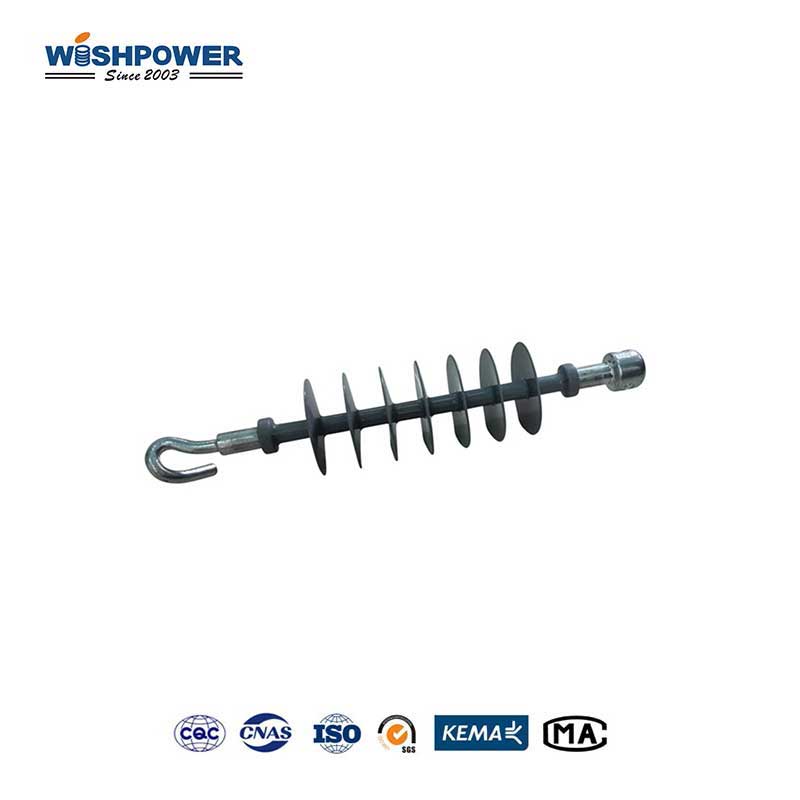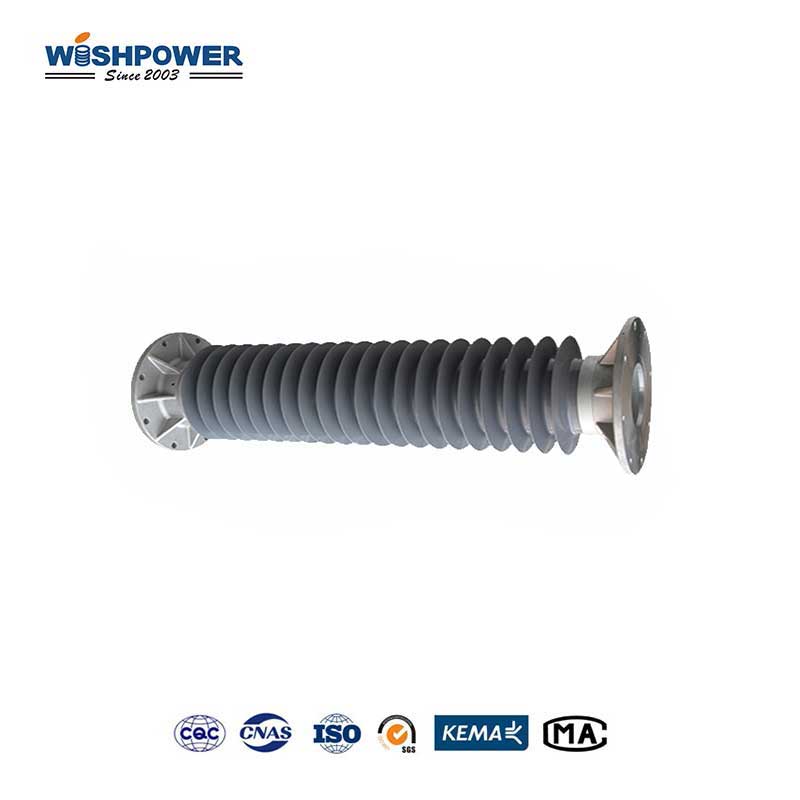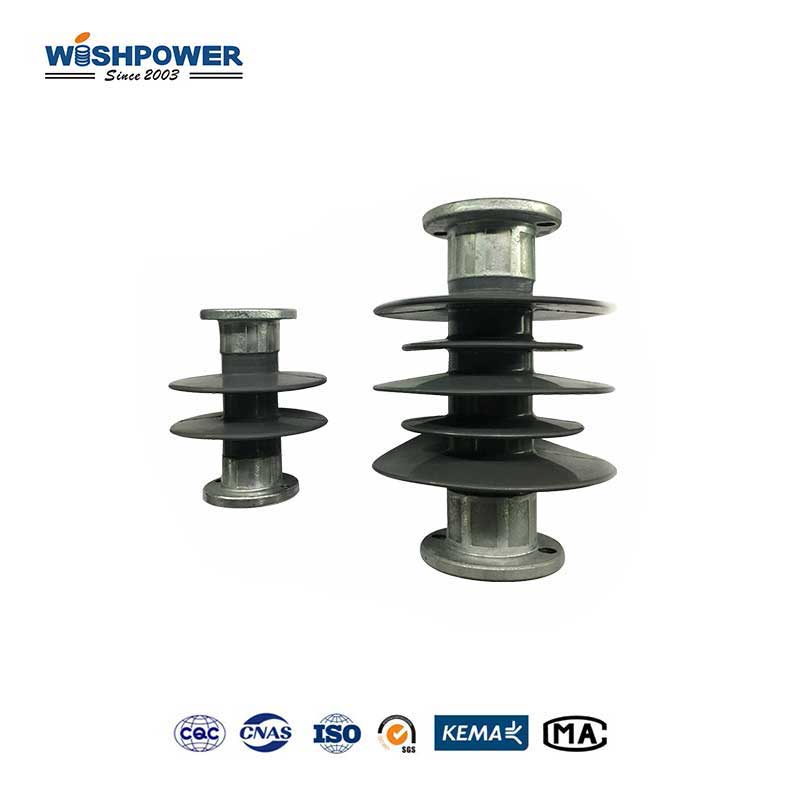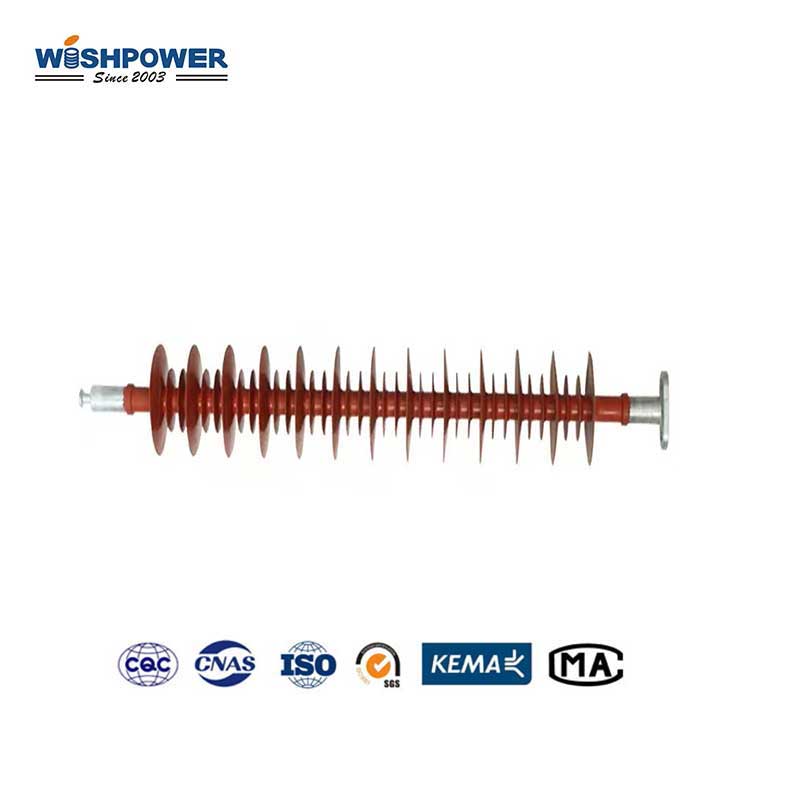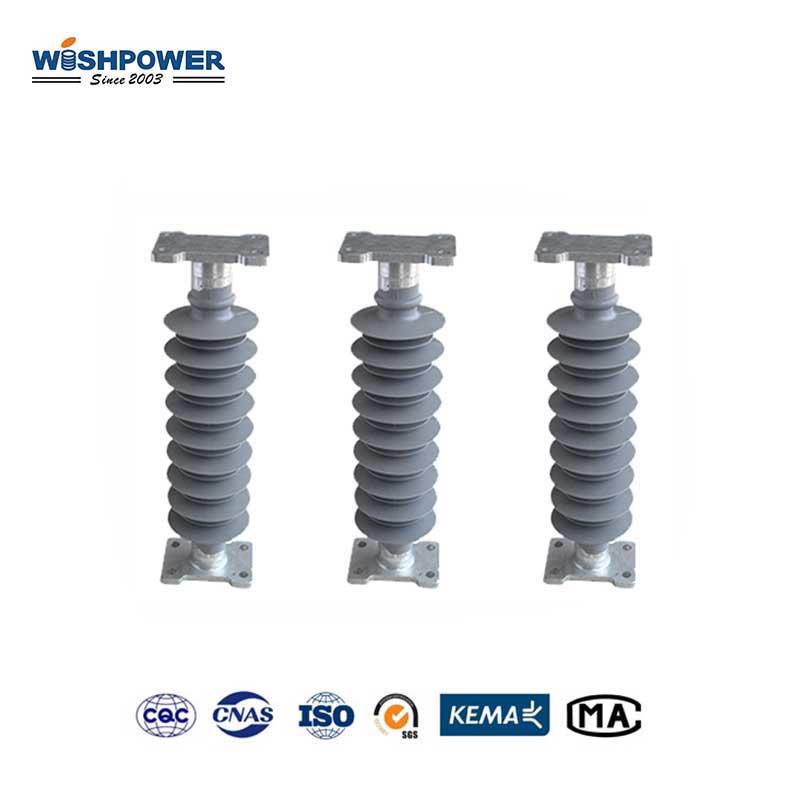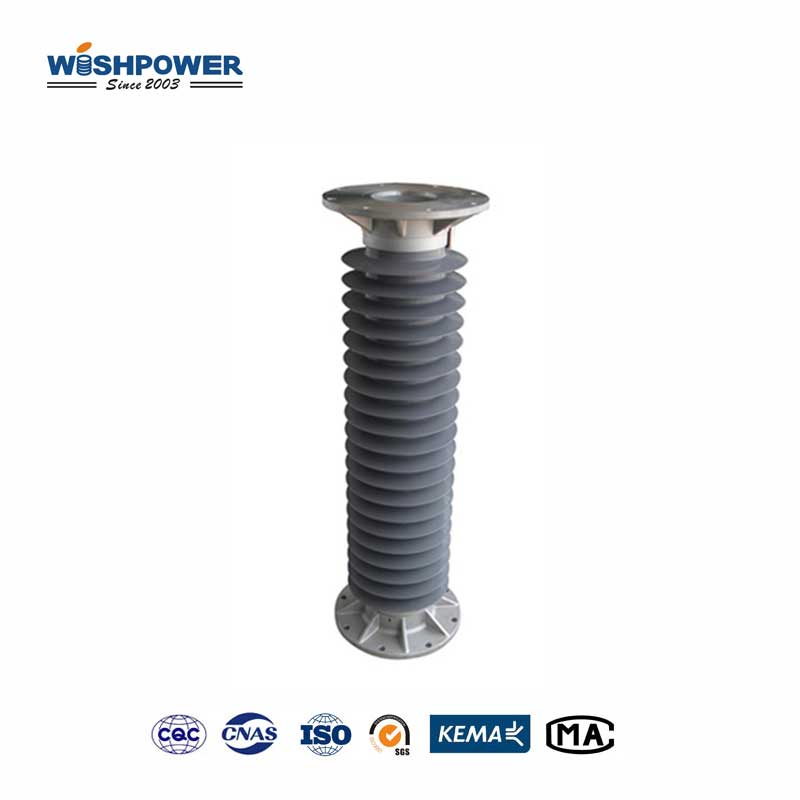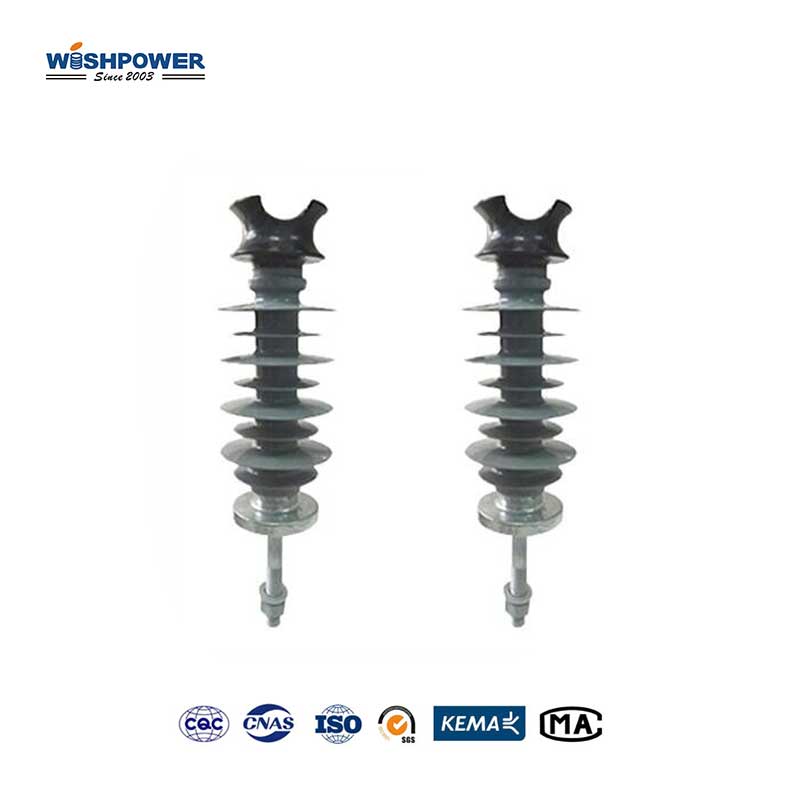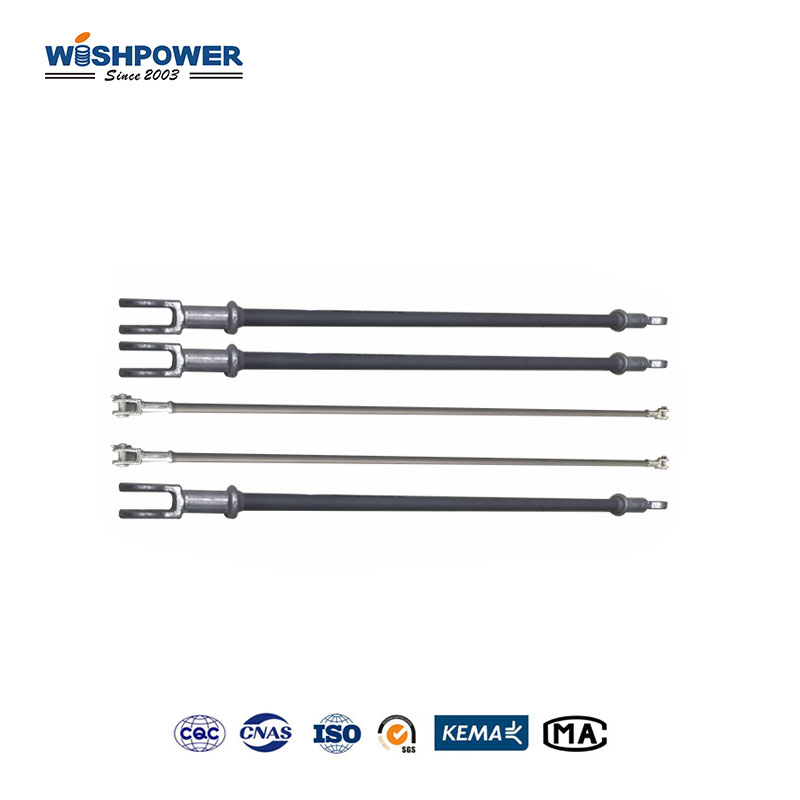Specification
| Product Type |
FQXG-25/(100/120) |
FOXG-25/(160/200) |
| Specified Voltage |
25 kV |
25 kV |
| Specified Mechanical Tensile Failing Load |
100/120 kN |
160/200 kN |
| Section Length |
800 |
850 |
| Min Insulation Distance |
≥600 mm |
≥600 mm |
| Min nominal Creepage Distance |
1600 mm |
1600 mm |
| Lightning Impulse Withstand Voltage(Peak Value) |
310 kV |
310 kV |
| Artificial Pollution Power Frequency Withstand Voltage (Salt Deposit Density) |
36 kV |
36 kV |
| Power Frequency Withstand Voltage Test-Wet |
150 kV |
150 kV |
The table above is just one of our product parameters. If you want more information, please get in touch with info@wishpower.net
What is the Silicone Rubber Composite Insulator?
Silicone Rubber Composite Insulator is a high-performance electrical component for insulation and mechanical support in the operation of high-voltage transmission and distribution systems. Made from fiberglass reinforced resin rod core, silicone rubber housing, and metal end fittings. The outside layer is the silicone rubber housing which is produced with hydrophobicity, and UV resistance and is also resistant to environmental factors like pollution, chemicals, and extreme weather conditions like humidity. Typically, the core (the glass fiber reinforced plastic or FRP material) is the mechanical strength needed to make the insulator and the silicone rubber prevents surface contamination by repelling water and dirt. This feature increases the capability of the insulator to work in adverse conditions such as heavy rain, humidity, or industrial pollution with good dielectric performance. In addition, their flexibility reduces the risk of breakage under mechanical stress.
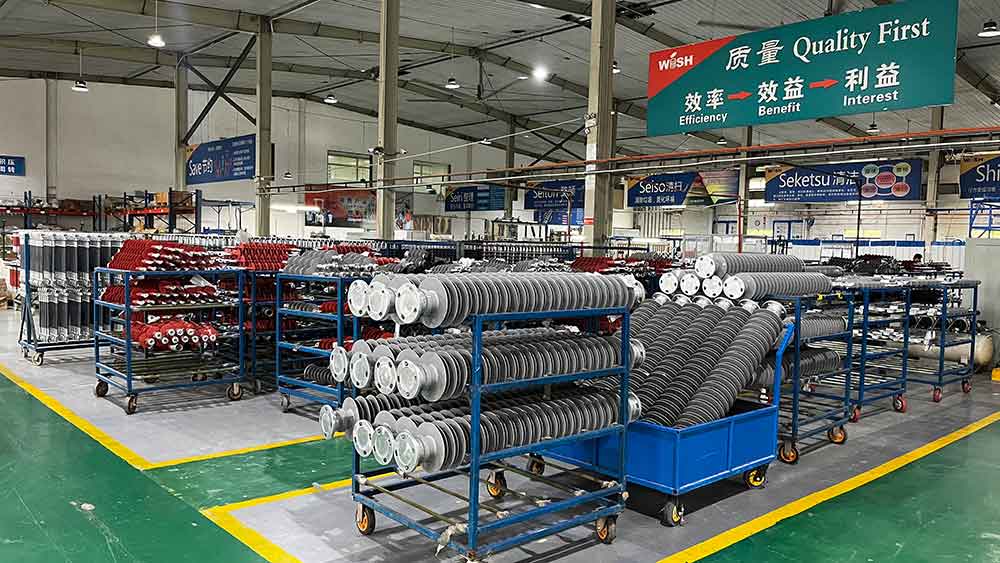
Composite vs Ceramic Insulators
Composite insulators consist of a composite FRP core and silicone rubber outer cage and are much lighter than metal insulators, bringing advantages in ease of transportation, installation, and lessening of loads on supporting structures. As flexible materials, they are highly durable to the point that they are less susceptible to breakage, and are very resistant to mechanical stress. In addition, silicone rubber is water and dirt-repellent, which reduces the risk of electrical flashovers, and it also outperforms ceramic insulators in polluted environments. One reason they are offering higher performance and requiring less maintenance, simple operation, and therefore lower overall lifecycle costs. They also have excellent electrical properties and they are not prone to cracking and corrosion.
Traditionally, ceramic insulators are made of porcelain or glass. With that body shape, they are heavier and need more robust support. Brittle they are; break or crack at the slightest force. They may also be hydrophilic, i.e., lacking hydrophobicity, and therefore more likely to become contaminated in industrial or coastal areas, and have to be cleaned more often. Most often they have lower upfront costs. They are reliable, but an increasing accumulation of contaminants increases the risk of a flashover.
Recycling
On the whole, composite insulator material consists of a fiberglass reinforced polymer (FRP) core, the silicone rubber outer shell, plus a metal end fitting. These materials are very durable and performant, but the issue is with recycling them. Despite the difficulty of separation of the fiberglass core from the silicone rubber and the lack of recycling processes for these polymers, the design and use of these resin EMI gels appear to be of little consequence. Silicone rubber is a thermoset material, and as such cannot be melted down as easily as thermoplastics. Recycling of fiberglass components is also extremely difficult because of the structure. But metal fittings are normally made of metal materials, like steel or aluminum, which can be recycled easily during the metal recycling process. Most composite insulators readily available today are not recyclable at all, and they are processed by disassembling the recyclable metal components from non-recyclable polymer and fiberglass components.
Impact on the environment
Unlike ceramic or glass insulators, Polymer Insulators assist in lowering the carbon footprint of installations due to their lightweight design that eliminates transportation energy consumption and emissions. Further reducing environmental impact is the long service life, combined with resistance to environmental pollutants and low maintenance requirements which, together, reduce the need for replacement or cleaning of equipment, thereby requiring significantly less water, chemicals, and energy in maintenance. Furthermore, the silicone rubber it utilizes is hydrophobic, reducing the likelihood of dirt and pollutants accumulating and allowing the mask to render fewer frequencies of maintenance activities, that may disrupt the surrounding environment. Because traditional insulators can be more prone to maintenance, this makes it especially helpful for areas with polluted or coastal air.
Nevertheless, there are disadvantages to end-of-life disposal. Due to landfill waste from materials such as fiberglass reinforced polymer (FRP) and silicone rubber, the recycled materials used in the prototype are not easily recycled so they pose environmental concerns in the disposability of materials. It’s hard and complex to break down into reusable parts and unlike ceramic insulators, which are easily recycled, it’s not. But thanks to their durability, better maintenance demands, and improved efficiency in dirty situations, their overall long-term impact on the environment is mitigated.
About Wishpower

Certificate

Hot Tags: Silicone Rubber Composite Insulator, Composite Insulator, China, Thailand, manufacturers, ISO factory, wholesale, KEMA, high quantity, best, price, low to high voltage






